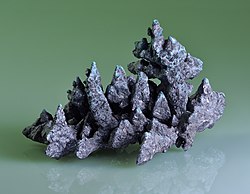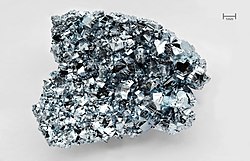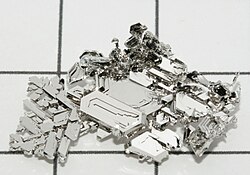Noble metal

A noble metal is a metal that has a low chemical reactivity. Normally, this means it is resistant to corrosion and oxidation in air, but more specific definitions exist in different fields of chemistry, with different levels of "nobility" for different elements depending on the definition.[1]
Gold, silver, and the platinum group metals are usually considered noble. Sometimes, mercury and copper can be regarded as noble metals; in specific cases, other elements like rhenium are added.
Some metals like nickel and titanium resist corrosion but are not considered noble because of their other properties, like how they react with oxygen.
Noble metals are valuable, because they are not commonly found in the Earth's crust. They have many uses in everyday things including chemical engineering, electronics, and jewelry.[2]
Noble Metal Media
Chalcopyrite, which is copper iron sulfide (CuFeS2), is the most abundant copper ore mineral
Acanthite, or silver sulfide (Ag2S)
Related pages
References
- ↑ Kepp, Kasper P. (2020). "Chemical Causes of Metal Nobleness" (PDF). ChemPhysChem. 21 (5): 360–369. doi:10.1002/cphc.202000013. PMID 31912974.
- ↑ "Updating the precious metals market". 21 October 2021. Archived from the original on 22 November 2021.







